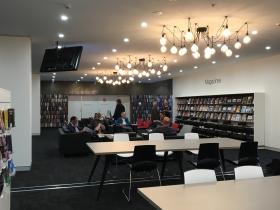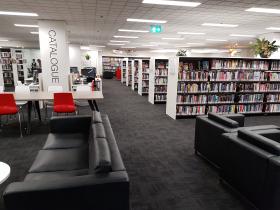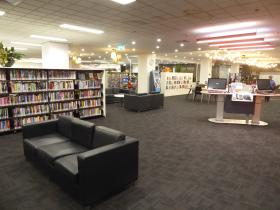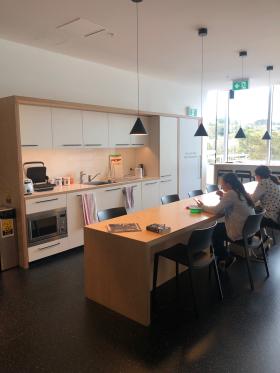Planning: Developing a building brief
The library brief outlines the requirements of a library service and the new or extended building.
The brief will be used to inform discussion and more detailed planning with the architect and design team.
The process of writing a brief will grow out of the needs analysis and will evolve through the planning process. At the outset it is important to focus on the bigger picture and set clear and achievable targets in the form of a mission statement. The brief is much more than just the allocation of space within the building.
Examples from previous library projects may assist in understanding the content and format of architectural briefs. Architects and library staff can work together to write the library brief. Consider engaging an architect to prepare the brief as a separate exercise to the final selection of the design architect.
Spatial planning at the initial design phases will challenge and verify briefed areas, which may alter. The brief is therefore not a static document and will be read in conjunction with schematic/design development reports and space data sheets as the building phases progress.
Templates
Download a template to help you write your library building brief.
Functional area schedule
A functional area schedule provides a guide to the type of functional areas that may be included in a public library. Each area, its size and possible location within the library will vary from building to building depending on the type of services the library provides and the needs of the local community. There may be other specific functional areas required in your library building project which have emerged from analysis of the community’s needs. The functional areas listed below, included in the design briefs, should be considered when planning and designing a public library building.



Collections
- Reference collection – can be combined with non-fiction
- Fiction collection
- Non-fiction collection
- Specialist collections (Local Studies, Community Languages and Indigenous collections)
- Large print collection
- Children’s collection
- Young adult collection
- Audiovisual collection
- Special genre collection, e.g. business, gardening
Reading and seating
- Newspaper and magazine lounge
- Individual study areas
- Individual seating areas including laptop use
- Lounge areas
- Group study areas
- Meeting spaces
Customer service
- Service desk
- Self-check
- Reference, information, roving service points
- Community information and display
- Council and community services
- Additional service desks – these might be needed for some libraries, for example local studies, toy library, tech help
Public access computers
- Public access computers with Internet
- OPACS
Children and youth
- Children’s activity area
- Children’s storytelling
- Young adult area
- Games area
- Toy library
Specialist options
- Specialist genre areas
- Specialist local and family history area
- Specialist storage and archive
- Digitisation area
- IT training room
- AV areas
- Mixing, recording and graphics studios
Staff areas

- Staff work room
- Staff work room storage
- Staff toilets, showers and lockers
- Staff kitchen and breakout area
- Staff meeting areas
- Staff outdoor area
Ancillary, circulation and amenities
- Foyer, corridors
- Additional space for vertical circulation
- Scanners, photocopiers, printers
- Toilets and parents’ room
- Plant room
- Server room
- Out of hours access
- Public lockers and shelving
- Cleaner’s storage
- Loading and delivery
Additional services
- Café
- Outdoor area/courtyard
- Community services
- Community kitchen
- Meeting rooms, lecture rooms, auditorium, multipurpose space, function room
- Exhibition and display
- Specialist work areas
- Shop
- Vending machines
Outdoor spaces and ventilation
The COVID-19 pandemic forced libraries to rethink the delivery of library services and the use of space. This informs library building planning including access to outdoor spaces.
Libraries are increasingly exploring the use of outdoor spaces. Some have outdoor reading areas while others utilise adjacent green spaces. Outdoor spaces can provide a good alternative, or additional, space for the delivery of library services. Some libraries have activated spaces around buildings with access to wi-fi and seating. Consideration must be given to fencing and safety, queuing, shade, rain shelter and social distancing even when these spaces are used on a temporary basis. Libraries can be planned with large doors leading outside that can be easily opened to extend the library space, allowing people to access outdoors and increase ventilation.
Operable windows are often not included in library planning because of perceived risk to the collection. Windows that are located high on walls can be opened for natural ventilation without allowing access by customers or damaging the collection.
Hygiene
Hygiene should be considered when planning a library facility with the inclusion of surfaces that are easy to clean and hands-free use through automatic doors and sensor activated taps.